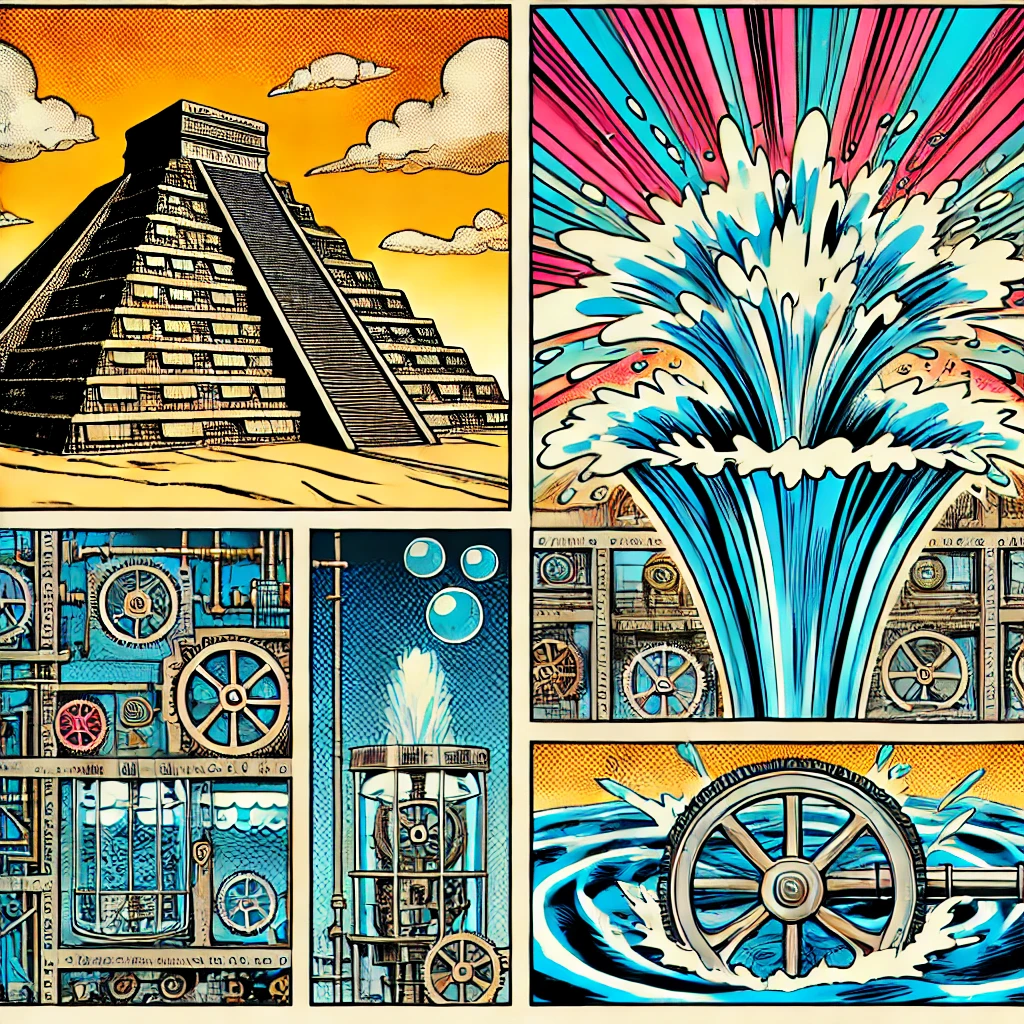Model of Great Pyramid as Water Pump
Dale Pond discovered that John Keely understood the basic underlying concept of Nature’s energy production. Using the method of implosion, resonance and water as an integral component of the ‘moving parts’ within the device, DP showed that Keely used Nature’s ‘female’ side of energy to produce, change and amplify its form.
Water under pressure is used to create a ‘water hammer’ effect whose energy is then amplified by the geometries of the ‘machine’. This is akin, it is thought, to how the Great Pyramid (and others) derived energy from subterranean water flows, picking up the micro vibrations, geometrically channeling and ultimately amplifying them.
http://sentinelkennels.com/Research_Article_V41.html
The idea of the Great Pyramid of Giza serving as a water pump is a speculative theory that has been proposed by some researchers and engineers. According to this theory, the internal chambers and passageways of the pyramid were designed to function as a hydraulic system capable of pumping water from the Nile River to higher elevations for irrigation or other purposes.
While there is no conclusive evidence to support this theory, proponents argue that the unique architectural features of the Great Pyramid, such as its internal chambers, shafts, and passageways, could have been repurposed for hydraulic engineering. They suggest that the pyramid’s subterranean chamber could have served as a water collection basin, while the King’s and Queen’s chambers could have functioned as air chambers or pressure vessels.
However, the theory of the Great Pyramid as a water pump remains speculative and controversial, and it is not supported by mainstream Egyptologists or archaeologists. Critics argue that there is little empirical evidence to support the idea that the pyramid was used as a hydraulic device, and that the architectural features attributed to this function could have served other purposes, such as religious, astronomical, or funerary functions.
Furthermore, the idea that the Great Pyramid could function as a standalone water pump, operating without the need for external water sources or infrastructure, is highly speculative and unlikely. Building and testing a working model of such a hydraulic system would require extensive research, engineering expertise, and resources, and would still not prove that the Great Pyramid was originally intended for this purpose.
In summary, while the theory of the Great Pyramid as a water pump is an intriguing concept that has captured the imagination of some researchers and engineers, it remains speculative and lacks empirical evidence. Further research and archaeological investigation are needed to fully understand the purpose and function of the Great Pyramid of Giza.
